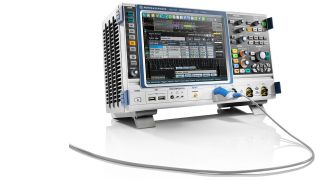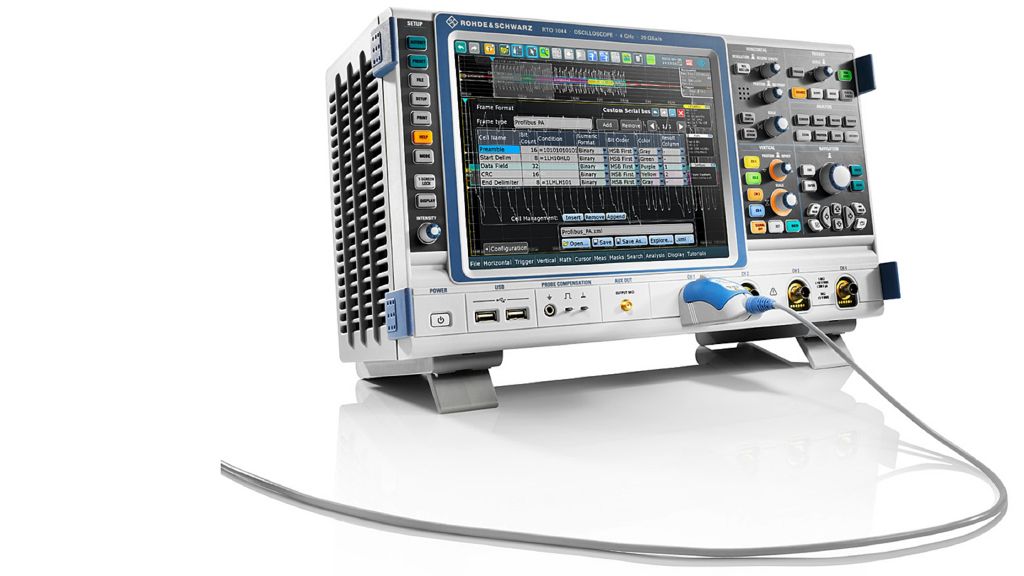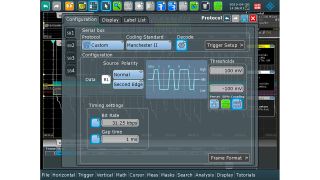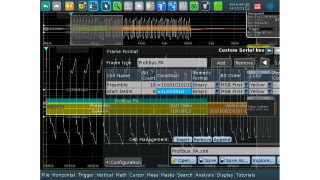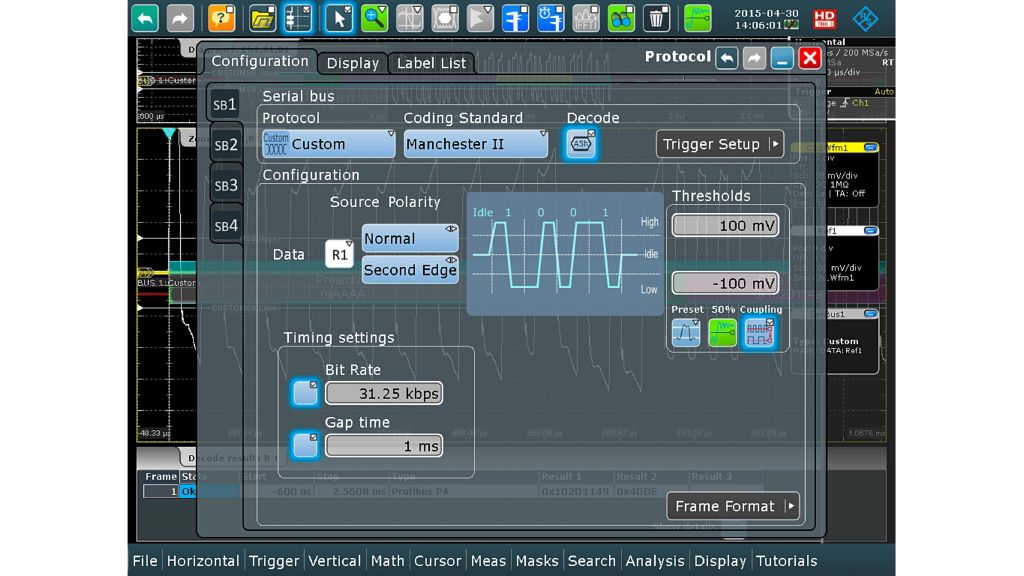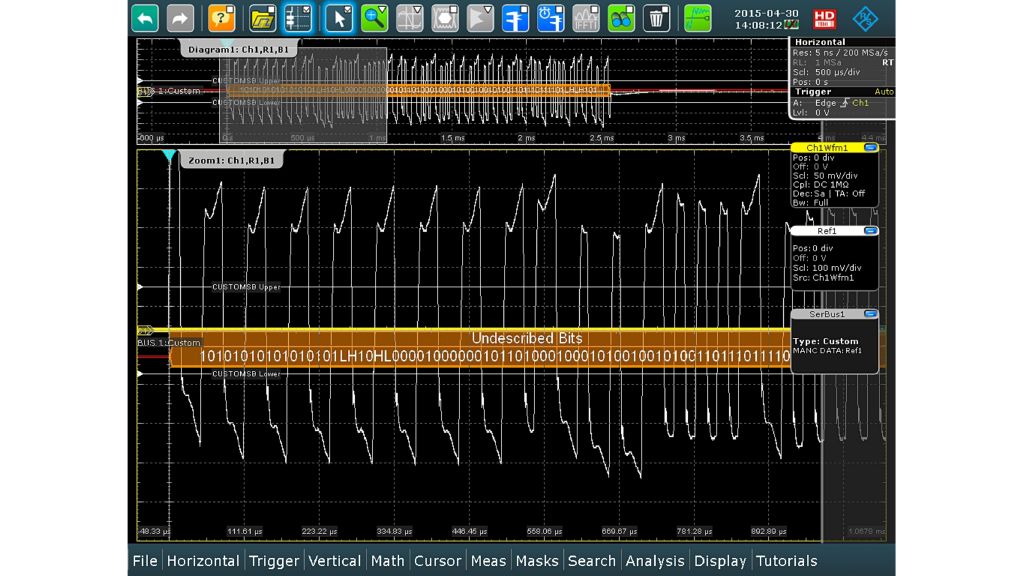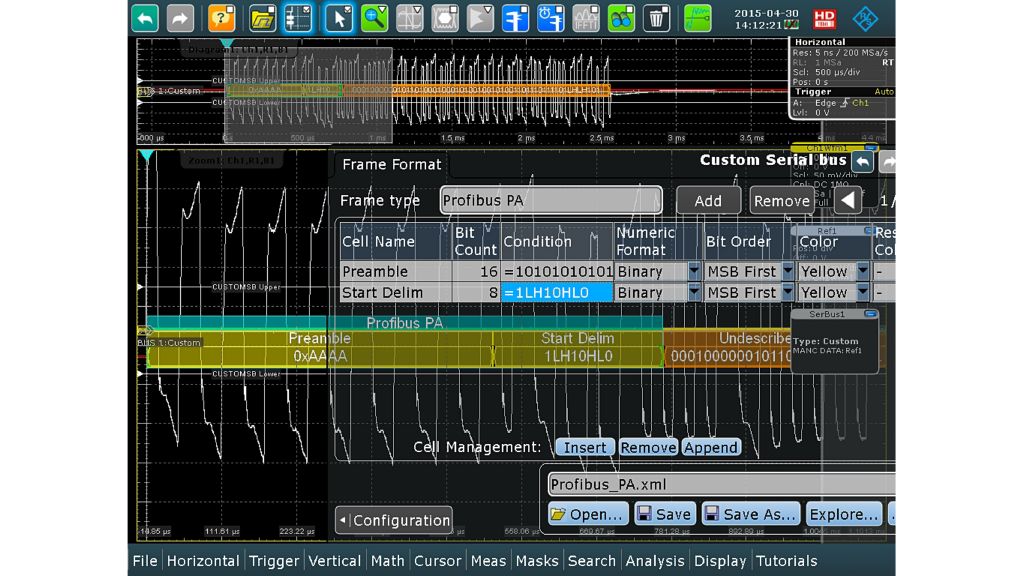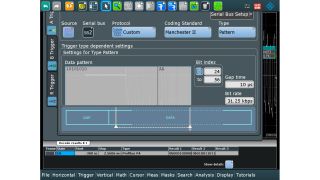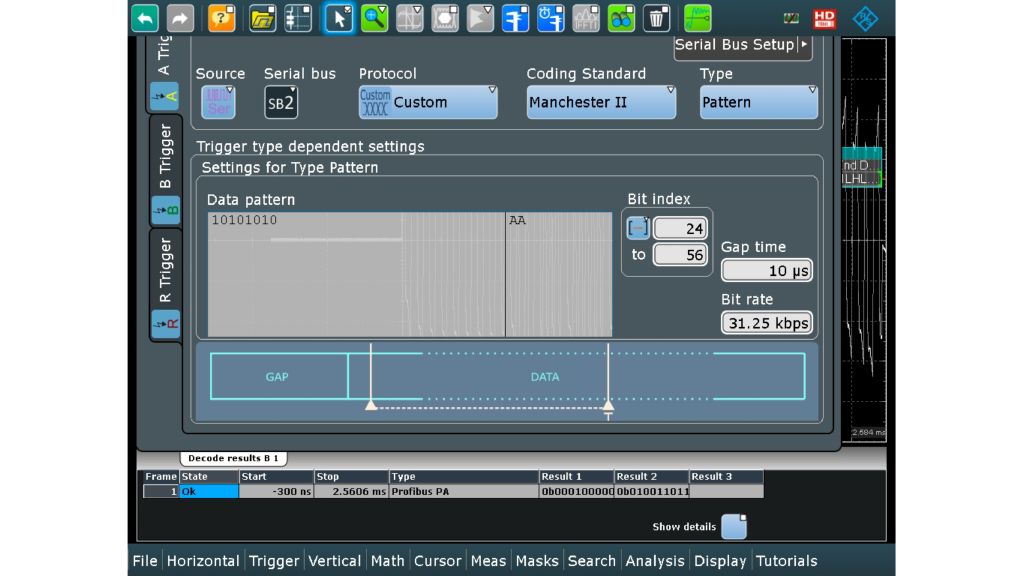Triggering and decoding Manchester and NRZ based buses
Many serial interfaces use Manchester or non-return-to-zero (NRZ) coding. Oscilloscopes typically offer dedicated software options for debugging and testing the communications interfaces for common standards such as I2C, UART or CAN. The R&S®RTx-K50 option expands the addressable range of interface standards by adding decoding capability for standardized and proprietary Manchester or NRZ coded buses. It allows customizable configuration of the protocol structure that has to be decoded.



